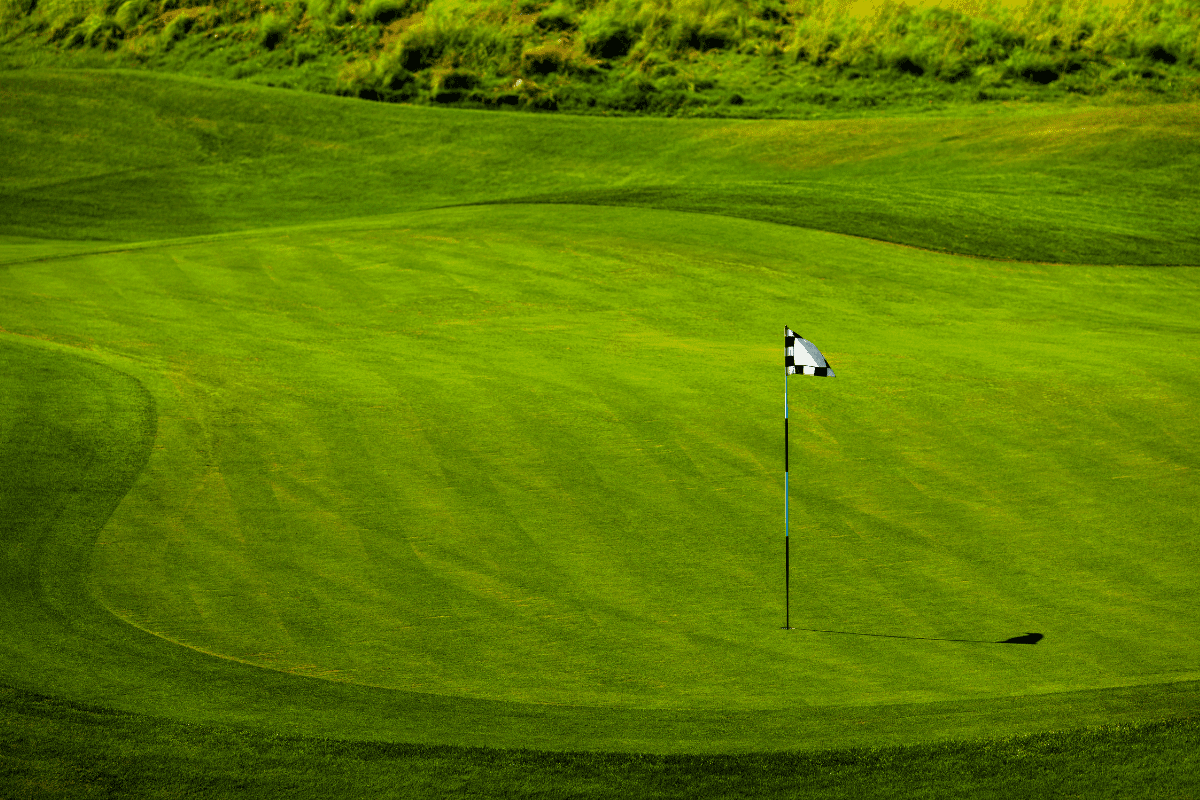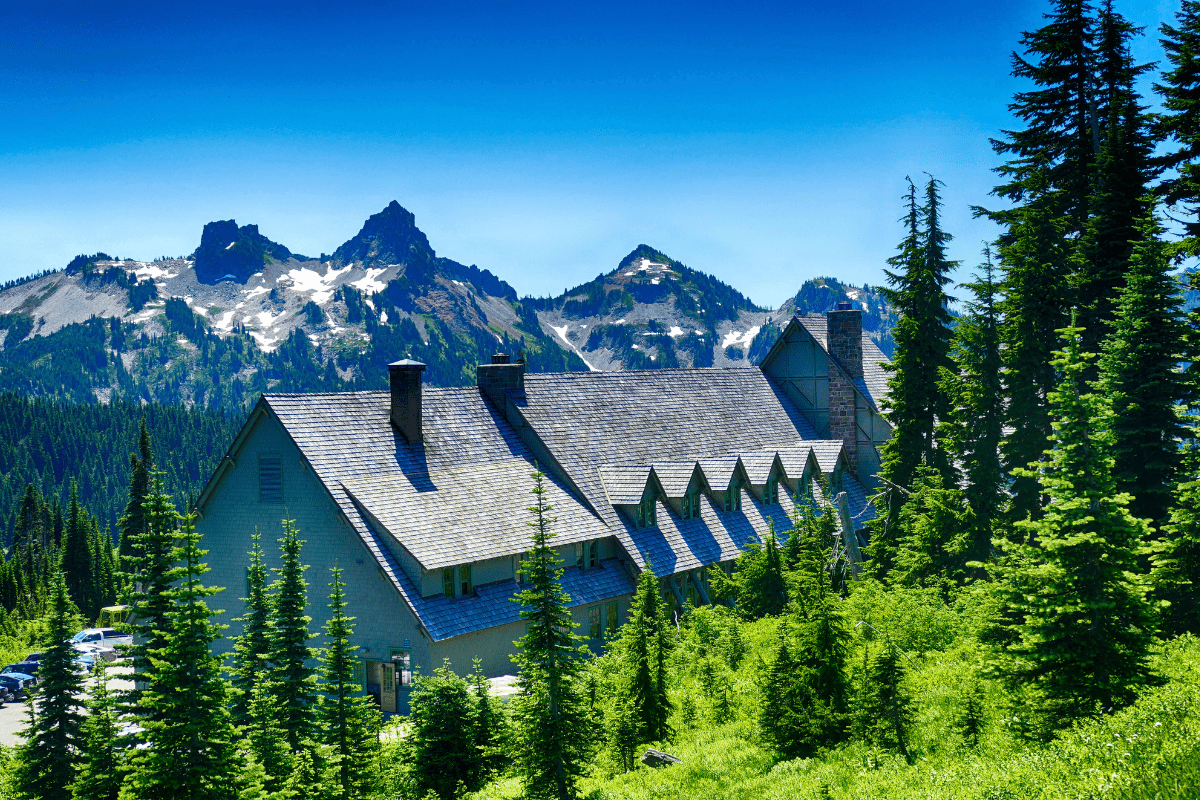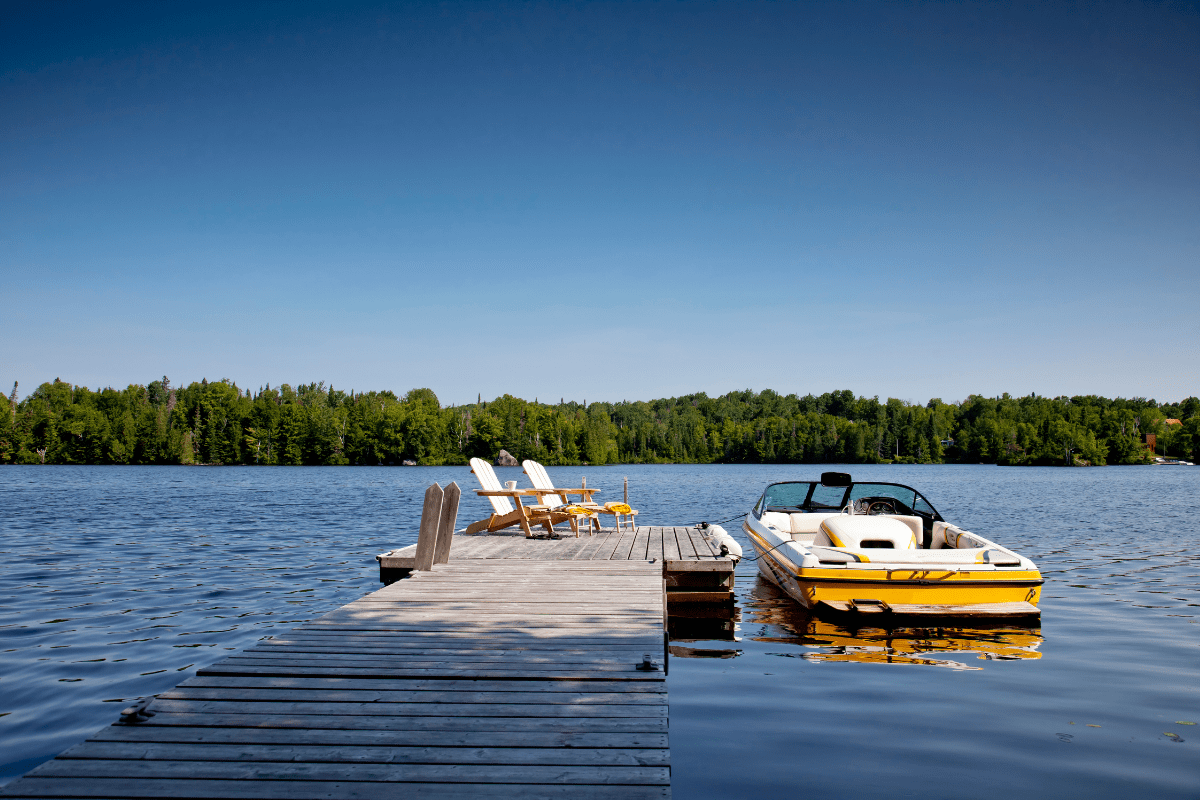Let me tell you about the time I accidentally discovered Washington might be America's most underrated golf destination. I was stuck in Seattle for work, googled "golf courses near me," and somehow ended up playing 36 holes in two days while barely scratching the surface of what this state offers. Now I'm that annoying friend who won't shut up about Pacific Northwest golf, and after reading this, you might become one too.
Why Washington deserves a spot on your golf bucket list
Here's the thing about Washington golf that nobody tells you: it's not just about playing in the rain (though yes, that happens). The state generates $1.2 billion in direct economic impact from golf tourism, with 680,000 overnight golf trips annually. Those aren't accidents… those are golfers who discovered something special.
The diversity here is honestly ridiculous. You can play authentic links golf at Chambers Bay in the morning, then drive three hours east and suddenly you're in high desert terrain that gets 300 days of sunshine annually. It's like having Scotland, Arizona, and Pebble Beach all within one state border. Plus, Washington has hosted everything from the U.S. Open to the PGA Championship, which means you're literally walking the same fairways as the pros… just probably not scoring like them.
The championship pedigree you didn't know about
Remember when Jordan Spieth won the 2015 U.S. Open at Chambers Bay? Okay, he actually didn't win (shoutout to Dustin Johnson), but that tournament put Washington golf on the map in a huge way. Since then, the state has hosted multiple USGA events and even the KPMG Women's PGA Championship.
What makes this impressive is that Washington pulled off these championships while maintaining public access to most of its best courses. Unlike some states where the best tracks are locked behind private gates, you can literally book a tee time at a U.S. Open venue tomorrow if you want.
The heavy hitters: Courses worth planning a trip around
Let's start with the showstoppers… the courses that make golfers do that thing where they immediately text their golf buddies "WE NEED TO PLAN A TRIP."
Chambers Bay: Where America meets Scotland
This place is bonkers in the best way possible. Robert Trent Jones Jr. took an old sand and gravel quarry and turned it into America's only true links course that hosted a U.S. Open. There's literally one tree on the entire property, which sounds weird until you're standing on the 15th tee, 246 yards from the green, with Puget Sound sprawling beside you, thinking "who needs trees anyway?"
The course is walking-only, which sounds terrible until you realize it's actually part of the experience. The fescue fairways create these firm, bouncy conditions that make your ball do things you didn't know were possible. Pro tip: embrace the ground game here, because if you try to fly everything to the pin, you're going to have a bad time.
Gamble Sands: Desert golf that doesn't feel like desert golf
Ranked #31 on Golf Digest's 100 Greatest Public Courses, Gamble Sands sits 1,200 feet above the Columbia River on a mesa that makes you wonder if you accidentally drove to another planet. David McLay Kidd designed this place in 2014, and he absolutely nailed it.
Here's what nobody tells you about Gamble Sands: it's simultaneously one of the hardest and easiest courses you'll ever play. The fairways are massive, the greens are huge, but somehow you'll still find ways to make bogey. As Kidd himself said, "good players will relish opportunities to score low and high handicappers will post their best round ever." Translation: everyone leaves happy.
The resort is expanding too:
- Scarecrow Course (August 2025)
- QuickSands 14-hole short course
- Cascade putting green (ridiculous fun)
- On-site Inn (no drunk driving!)
Wine Valley: Where golf meets grapes
Down in Walla Walla, Wine Valley Golf Club proves that wine country isn't just for sipping Cabernet. This Dan Hixson design sprawls across 700 acres of former wheat fields with exactly zero trees. It's basically an "inland Bandon Dunes," which sounds like marketing speak until you play it and realize… yeah, that's actually pretty accurate.
The wind here is no joke. One day it's helping you reach par 5s in two, the next day you're hitting 5-iron from 150 yards. The course stretches to 7,600 yards, but honestly, the yardage becomes meaningless when the wind starts blowing. Stay downtown at the Marcus Whitman Hotel and hit some of the 100+ wineries in the area… you know, for recovery purposes.
Regional gems organized by your travel style
Not everyone can drop everything for a week-long golf odyssey (though if you can, definitely do that). Here's how to tackle Washington golf based on where you're headed.
Seattle/Puget Sound: Big city, bigger views
The Seattle area spoils golfers with options, though "affordable" isn't really in the vocabulary here. Worth every penny though, especially at The Golf Club at Newcastle.
Newcastle gives you two courses (Coal Creek and China Creek) with 360-degree views that include Lake Washington, Mount Rainier, and both the Olympic and Cascade mountain ranges. The 44,000-square-foot clubhouse makes you feel fancy even if you're wearing the same golf shirt for the third day straight. Green fees run $130+, but this is where you take clients or celebrate that promotion.
For a more budget-friendly option that still delivers championship conditions, make the 90-minute trek to Gold Mountain Golf Club in Bremerton. Yes, it includes a ferry ride. No, that's not a negative… it's actually part of the charm. The Olympic Course hosted the 2011 U.S. Junior Amateur (Jordan Spieth won), and municipal ownership keeps rates under $50. The Cascade Course means you can play 36 holes without breaking the bank.
Hidden gem alert: Druids Glen in Kent flies completely under the radar despite Mount Rainier views and a Keith Foster design that'll test every club in your bag. It's 40 minutes from Seattle, has 60+ bunkers and nine lakes, and somehow isn't constantly packed.
Eastern Washington: Where the sun actually shines
Cross the Cascades and golf changes completely. The rain disappears, the sun comes out, and suddenly you're playing firm, fast golf in high desert terrain.
Beyond Gamble Sands, you need to experience Apple Tree Golf Course in Yakima. The 17th hole alone is worth the trip… a 180-yard par 3 to an apple-shaped island green. Yes, it's gimmicky. Yes, it's also ridiculously fun. The course winds through actual apple orchards where fruit still grows, and at around $90, it's an affordable addition to any Eastern Washington golf trip.
Down in Pullman, Palouse Ridge at Washington State University takes those famous rolling wheat fields and turns them into links-style golf 2,500 feet above sea level. The elevation changes are absurd… we're talking 100-foot swings that create natural amphitheaters. Non-resident fees hover around $100, which seems steep until you realize you're playing one of the state's top 10 courses.
Mountain golf: Elevation changes everything
Suncadia Resort in Cle Elum proves that mountain golf and resort amenities can coexist beautifully. Three courses give you options:
- Rope Rider: 120-foot elevation drops
- Prospector: Arnold Palmer design
- Tumble Creek: Private (sadly)
The elevation keeps summer temps 10-15 degrees cooler than Seattle, plus the thin air adds 5-10% distance to every shot. It's like getting a free equipment upgrade just by driving up the mountain.
Bear Mountain Ranch at Lake Chelan takes the mountain golf concept and adds lake views that'll make you forget what you're putting for. The 4th hole drops 417 yards from tee to green, offering the kind of shot you'll be describing at the bar for years. When PGA professionals vote something their "favorite new course," you know it's legit.
Coastal golf: Links without the passport
While Chambers Bay gets all the press, the Olympic Peninsula hides several coastal gems. Port Ludlow Golf Club offers 27 holes with Hood Canal and Ludlow Bay views that Golf Magazine ranks among the state's top five public experiences. The marina and waterfront inn make it a perfect couples' getaway… assuming your partner doesn't mind you disappearing for five hours.
For true budget links golf, Ocean Shores Golf Course delivers authentic coastal conditions at $50-75. The front nine plays like Scottish links, complete with firm turf and constant wind. The ocean air makes the 6,252 yards play way longer than the card suggests, so leave your ego in the car.
Actually planning your Washington golf adventure
Alright, you're convinced. Here's how to make this happen without screwing it up.
When to go (this matters more than you think)
Eastern Washington plays great March through November, with May through September being money. The desert courses stay firm and fast, plus you get those long summer days where you can tee off at 6 PM and still finish.
Coastal and Seattle courses technically stay open year-round, but unless you enjoy golf in a raincoat, stick to May through October. Mountain courses close for winter (shocking, I know), so plan those for summer when you need a break from the heat.
What it'll cost you
Let's talk money, because golf trips add up fast:
- Marquee public courses: $100-170
- Hidden gems: $50-100
- Municipal courses: Under $50
- Peak season premium: 20-30% higher
- Walking (when available): 30-40% discount
Sample itineraries that actually work
The Eastern Washington Desert Loop (5 days): Start at Gamble Sands for two nights, then head south to Wine Valley for two more. Hit Palouse Ridge on the drive back, with a quick stop at Apple Tree if you're not completely exhausted. This hits all the different Eastern Washington experiences without excessive windshield time.
Seattle Area Sampler (long weekend): Base yourself in Seattle or Bellevue. Play Chambers Bay one day (get there early, it's an experience), Newcastle the next, then take the ferry to Gold Mountain. If you have a fourth day, Druids Glen makes a perfect closer.
Mountain and Lake Combo (4 days): This one's all about the views. Spend 2-3 nights at Suncadia playing both public courses, then relocate to Lake Chelan for Bear Mountain Ranch and lake life. Warning: your Instagram followers might unfollow you out of jealousy.
Booking resources that actually work
Skip the random Google searches and use these:
- Direct course websites (best rates)
- GolfNow (hot deals)
- Golf Pass (reviews and deals)
- Resort packages (include breakfast)
Insider tips from someone who learned the hard way
Ferry rides to Bremerton courses aren't a hassle… they're part of the experience. Grab a beer, watch the water, and arrive relaxed.
Eastern Washington weather is way more reliable than the Seattle area. If you only have one shot at good weather, head east.
Twilight rates in summer are incredible deals. When the sun doesn't set until 9 PM, that 4 PM tee time gives you plenty of daylight.
Don't skip the wine country courses just because you don't drink wine. The golf stands on its own, and there's always beer.
Resort packages often include sneaky value like breakfast and range balls. Do the math before booking separately.
The bottom line on Washington golf
Look, I could keep going about Washington golf until you block my number, but here's what it comes down to: this state offers world-class golf across dramatically different landscapes, often at prices that would be impossible in California or Arizona.
Whether you're chasing a U.S. Open experience at Chambers Bay, desert golf perfection at Gamble Sands, or just want to play somewhere beautiful without taking out a second mortgage, Washington delivers. The infrastructure is there with 280 total courses, the quality is proven by major championships, and the variety means you could play here for years without getting bored.
The secret is out, but honestly, with this much good golf, there's plenty of room for everyone. Just maybe don't tell too many people about those $50 hidden gems… some secrets are worth keeping.





